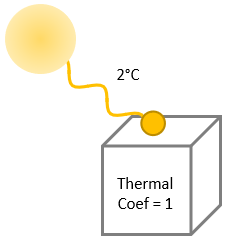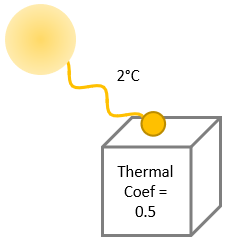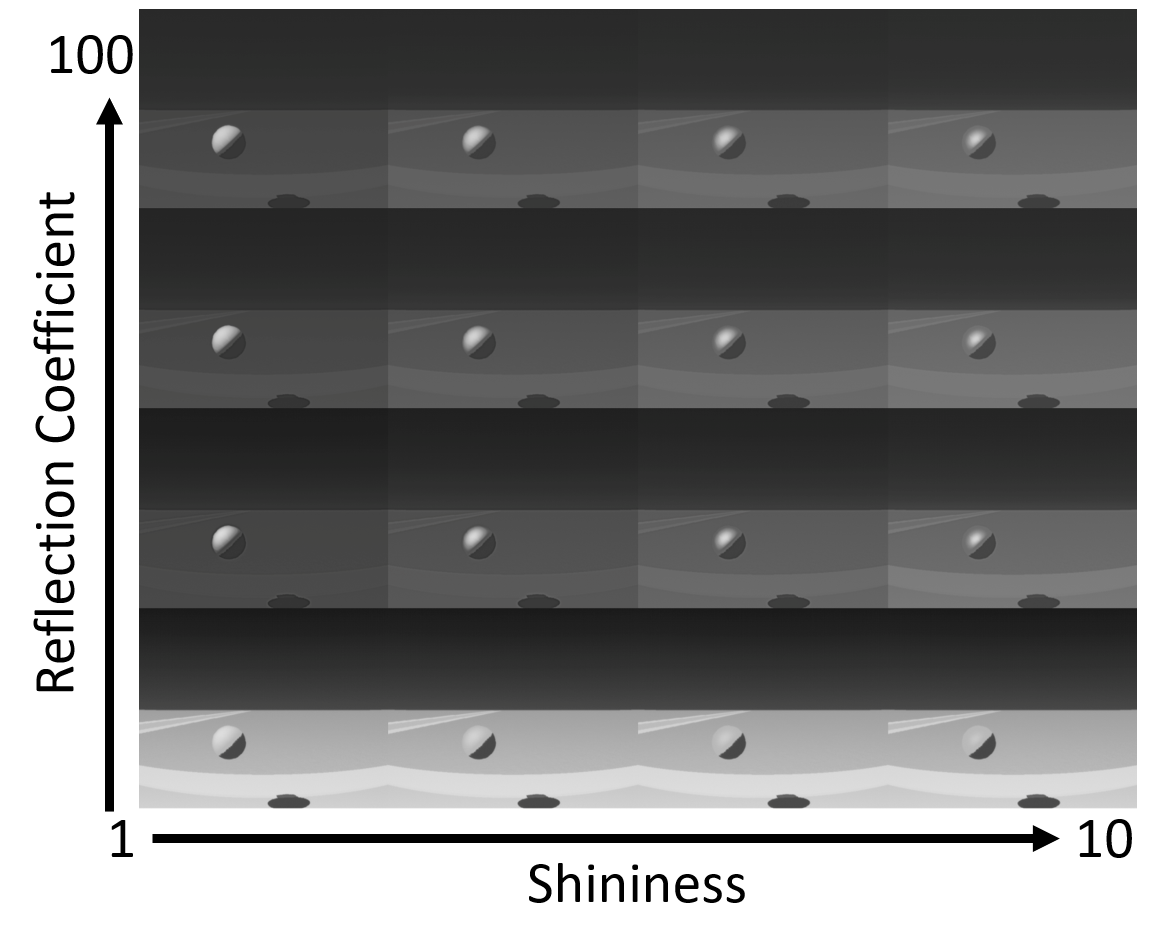Temperature and Thermal Properties
This page highlights the environment and objects' properties impacting thermal imaging.
Thermal Imaging
Thermal cameras detect thermal radiation, that is to say the energy in the infrared wavelength, then convert it into a visible light display.
Ansys AVxcelerate Sensors Simulator thermal cameras detect thermal radiation in the Long-wavelength infrared range of the electromagnetic spectrum going from 7 to 14 µm. For more details about FLIR thermal cameras, refer to the FLIR Thermal Camera section in AVxcelerate Sensors Simulator Users' Guide.
Many factors influence the spectral radiance of an object detected by a thermal camera:
- the direct emission of the objects in the scene that is defined by the object's temperature and the thermal properties of its surface,
- the diffuse reflection on objects,
- the distance of the object from the thermal camera,
- the scene location, time and ambient conditions, which define:
- the direct emission of the sun,
- the direct emission of the sky,
- the atmosphere direct emission (that attenuates the detected thermal radiation according to the distance between the object and the thermal camera),
- the solar warming.
Then, the scene and assets involved in thermal camera simulations should be prepared with specific parameters.
Assets Properties
- Temperature: defines spectral energy that the object emits in the scene,
- Emissivity: effectiveness of a material in emitting energy as thermal
radiation,

- Reflectance: ability of a material to reflect the thermal radiation to which
the object is exposed.

Temperature
The temperature of an object defines the peak emission wavelength on which the object emits thermal radiation.
For example, the peak emission wavelength for a human body at 37 °C is around the 10 µm wavelength.
If the temperature of an object is equal to the ambient temperature, there is no contrast between the background and the object, so the thermal imager may not detect the object.
The temperature of an object in the scene may increase due to sun exposure.

However, the cube on the left is exposed to the sun, while the cube on the right is in the shadow, then their final temperature (i.e. including the effect of the direct illumination of the sun) will differ.
The final temperature of the cube exposed to the sun is impacted by the solar warming, while the temperature of the cube in the shadow is not.
For sun-exposed objects, two parameters are to be taken into account:
- Maximal Solar Warming that is to say the thermal contribution of the sun on surfaces (for more details see Maximal Solar Warming),
- Thermal Coefficient that defines the effectiveness for each material to be heated by the solar radiation (Maximal Solar Warming) .
For an object exposed to the sun, the final temperature including the effect of the solar warming is:
Initial temperature of the object + (Max Solar Warming * Thermal coefficient)
On the following examples:
- the initial Temperature of each cube set at the mesh level is the same: 35 °C
- the Thermal coefficient set at the material part level differs
- the Maximal Solar Warming (from the natural sky properties) is 2 °C
 |
 |
|
Final temperature of the cube: 35 + (2 * 1) = 37 °C |
Final temperature of the cube: 35 + (2 * 0.5) = 36 °C |
Emissivity
Emissivity is the effectiveness of a material in emitting energy as thermal radiation.
Emissivity is the ratio of the thermal radiation of a material's surface to the thermal radiation of the black body.
The amount of thermal energy emitted by two different materials at the same temperature then varies according to their emissivity.
For example, the emissivity of a black plastic is 0.94 (94%) and 0.45 (45%) for aluminum painting.
Reflectance
The reflectance of a material is another significant optical property to consider for IR energy detection.
In Ansys AVxcelerate Asset Preparation, the objects reflect only the ambient radiation of the sky and the direct radiation of the sun.
The Reflection Coefficient (%) sets the ratio of thermal radiation that the material reflects to the whole thermal radiation to which the object is exposed.
The Shininess of the reflection defines how diffuse the reflected radiation is. The lower the value is, the more diffuse the reflection is; the higher the value is, the shinier the material is.

Environment Properties
Maximal Solar Warming
The Maximal Solar Warming is the maximal temperature difference between shadowed and sun-exposed objects.
With the default natural sky properties, the contribution of the direct illumination of the sun on surfaces is computed automatically (in °C) based on the following user-defined parameters:
- Zenith (calculated based on the date, time and location of the scene)
- Ambient temperature
- Wind speed (constant set at 4.5 m/s)
- Mean road emissivity
Atmosphere Spectral Attenuation Coefficient
- the atmosphere temperature (the Ambient Temperature (°C) set the natural sky properties),
- the atmosphere humidity (the Relative Humidity (%) set the natural sky properties),
- the distance of the object from the thermal camera.


